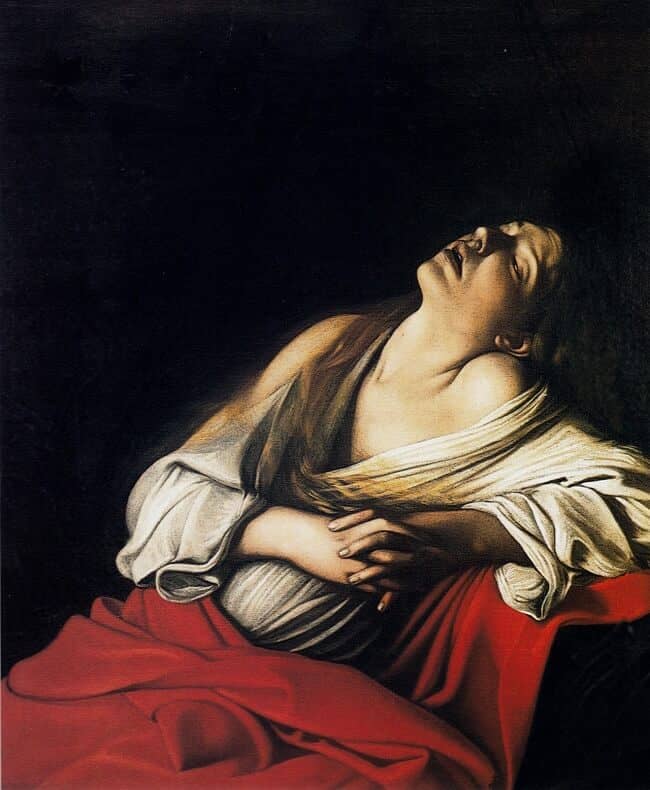The Magdalen in Ecstacy, by Caravaggio

Caravaggio probably painted The Magdalen in Ecstasy after he had killed Ranuccio Tommasoni on 29 May and while he was staying in hiding on the estates of the Principe
Marzio Colonna, either at Zagarolo, Palestrina or Paliano. The present picture is the best of eighteen known versions but has only recently been claimed as the lost original
by Marini - a view now supported by a number of others.
Although the sources refer simply to a Magdalen, Caravaggio has almost certainly depicted one of her rapturous visions or ecstasies. According to The Golden Legend
Mary Magdalen, the penitent sinner, retired after Christ's death to a cave at Sainte-Baume near Aix-en-Provence to live as a hermit; she ate nothing, her only nourishment
being the food of the spirit, for she was transported by angels seven times a day into Heaven where 'she heard, with her bodily ears, the delightful harmonies of the celestial
choirs'. It is clear from her abandoned posture and such a carefully revealed detail as the ear, indicating that she is listening to the heavenly music, that Caravaggio
has depicted such a moment, although in doing so he was predictably original. In earlier art the ecstasy had usually been shown as an actual levitation, or assumption, with
Mary floating up to Heaven and always accompanied by angels; and while later artists such as Rubens or Vouet adopted Caravaggio's earth-bound interpretation they did not
dispense with the angels. Nevertheless, if less literal, Caravaggio's painting is more convincing than these later works, for while he deliberately, and influentially, expressed
the parallel between mystical surrender and erotic love, implied by the Magdalen's posture and her bared left shoulder, he did not pruriently and inappropriately emphasize her
sexuality by uncovering her breasts.
















